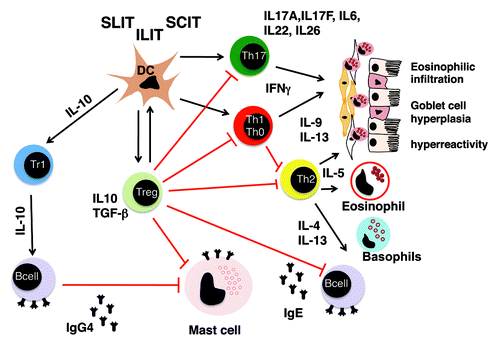Figures & data
Figure 1. Mechanisms of allergen-specific immunotherapy: Subcutaneus and sublingual immunotherapy initially affects antigen-presenting cells at the side of administration and in the draining lymph nodes. This leads to the induction of Treg cells via so far not completely understood mechanisms. Treg cells in turn exert potent inhibitory effects by using multiple mechanisms. They antagonize the inflammatory properties of effector Th1cells (epithelial cell activation and apoptosis), Th2 cells (epithelial inflammation, mucous secretion, mast cell, eosinophil and basophil activation, IgE production) and Th17 cells (epithelial inflammation, chronic neutrophilic inflammation). Moreover, they contribute to the generation of IgG4 and the suppression of specific IgE, induce tolerogenic DCs while suppressing inflammatory DCs and display, directly and indirectly, suppressive effects on mast cells, eosinophils, basophils and resident tissue cells mediating chronic tissue remodeling.
